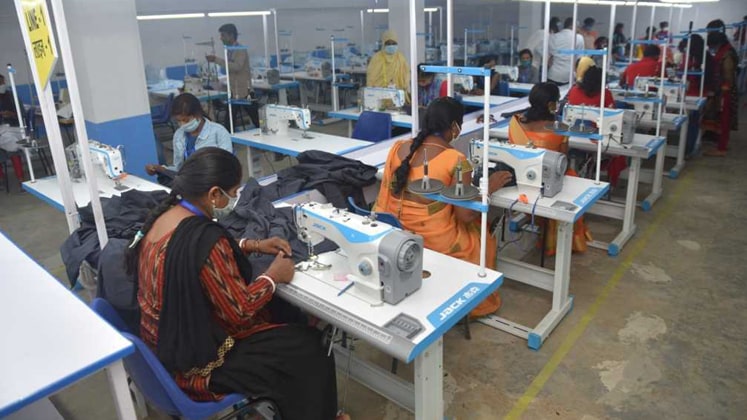Whenever the issue of competitiveness or survival of the Indian apparel export industry is discussed at any platform, labour reform emerges as a big challenge and that too not only for giants but for medium-level companies also. But now things are changing, as just a few months back, major states did many reforms in this regard and now the Union Government has also come up with three major reforms: Industrial Relation Code 2020, Health and Working Conditions Codes 2020, and Code on Social Security 2020. Now as all processes have been cleared in this regard, the laws are enforced. One of the most important points regarding labour reforms is that these reforms or any such laws are something not only in the favour of workers or industry, but are also a win-win for all. And the Government is claiming the same that the changes will benefit all.
The State Governments are allowed to pass their own labour laws, but the new codes issued by the Union Government will override these. The experts believe that workers might fear losing their rights in certain cases, and the onus is on the employers to make sure this feeling is eliminated. As far as the industry is concerned, it has reacted positively to these changes, but at the same time, the view emerged strongly that the real impact of these changes will be observed once things get completely normal. And it may take at least 6 months or even more. These three codes will subsume 25 labour laws and the Government intend to implement the new labour codes from 1 April. What has changed and who will be benefited…
Owners
Earlier, any unit having 100 or less employees could close its operations without the Government permission, but now, the limit has been increased and organisations having 300 employees don’t require Government approval for closure.
While only one registration will be required to open a unit now, six were required earlier.
Filing of only one return will now be required regarding the following of all kinds of labour codes of conduct, while it was eight earlier.
Labour inspector will not allow inspecting any unit without prior information.
Random inspection of units will be done through the faceless system. Punishment, in case of not following labour laws, will be for 3 years, and not for 7 like earlier.
50 per cent of the fine or whatever that will be imposed by the courts on the employers will be given to employees. (This will be apart from the compensation ordered by the courts).
Workers
It is mandatory to give appointment letter to workers.
Wages have to be paid only digitally.
Health check-up is must once a year.
Labour bureau will be formed to have data of all migrant workers.
All migrant workers will get support of the Government regarding travelling to their hometowns.
Now social security fund will be created for the workers of the unorganised sector.
On the basis of self-assessment, workers of the unorganised sector will be able to do electronic registration.
Now women workers will have the choice to work in night shifts.
Fixed term staff will also get most of the benefits like fixed employees. (Even someone working for on a contract of one year will be eligible for gratuity.)
Further, the industrial relations (IR) code envisages an additional monetary benefit equivalent to 15 days of wages under the newly created Reskilling Fund.
Also Read: There’s buzz about jobs in Bihar but no focus on apparel industry
Unions
These reforms also put restrictions on the recognition of trade unions – making it mandatory for them to represent at least 10 per cent of workers in a given sector – and prohibit them from striking without prior notice and during conciliation proceedings.
Ministry’s take
Giving clarification on raising employee limit of smaller units for closure to 300, the Labour Ministry believes that it is only the aspect of prior permission of the appropriate Government which has been removed and other benefits and workers’ rights have been kept intact. The workers’ rights like notice before retrenchment, compensation at the rate of 15 days wages per completed year of service and pay in lieu of notice period have not been compromised. It also says that there has been no empirical evidence to suggest that higher threshold promotes hire and fire.
It is pertinent to mention here that in 2014, Rajasthan had increased the threshold from 100 to 300 workers and done away with the requirement of prior permission before retrenchment etc., in case of firms having less than 300 workers. The impact of the increase in threshold in Rajasthan showed that the average number of factories in Rajasthan having more than 100 workers increased significantly as compared to the rest of India. As many as 15 more states have already enhanced threshold to 300 workers.
The OSH (Occupational Safety Health) Code expands the definition of the migrant workers to include those workers who would be directly employed by the employer besides by the contractor. A worker, who comes on his own, in the destination state, can declare himself a migrant worker by registering on an electronic portal on the basis of self-declaration seeded with Aadhar.
As per the Ministry, the position of Trade Unions has been strengthened by introducing a decentralised registration process. The Ministry has dubbed apprehensions regarding 14-day notice period (for strike) as totally unfounded as it only adds an opportunity for resolving the labour grievance before going on strike.
Expected impact
These labour laws will provide little more power to owners and help the labour unions to maintain their power. Apart from creating ease for existing units, these reforms will liberalise conditions for investment. These are also expected to create more attraction for foreign investments in small-scale sectors.
Also Read: Labour shortage or not – A ground report by Apparel Resources








